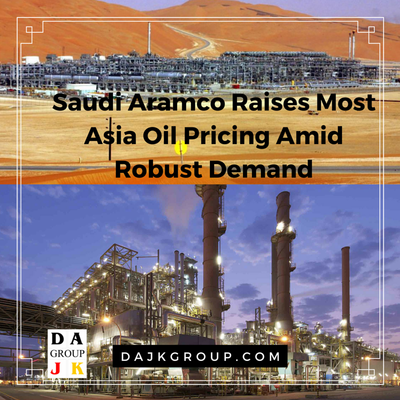|
• Royal Dutch Shell (NYSE: RDS.A) requested $2 billion from Saudi Aramco as part of the breakup of their joint venture Motiva Enterprises. Negotiations will be difficult, Reuters reports, but the breakup is expected to be completed in October. • Petrobras has announced its decision to put nine small, shallow-water oil fields up for sale, in an effort to reduce its $12 billion pile of debt. But a source told Reuters that “the fields are junk” and will require substantial investment. • Chevron (NYSE: CVX), ExxonMobil (NYSE: XOM) and their partners have agreed to move forward on a $36.8 billion expansion of the Tengiz oil field in Kazakhstan. The expansion could add roughly 200,000 barrels per day of output beginning in 2022. Oil prices fell sharply on Tuesday, down more than 4 percent as the U.S. rig count shot up at the end of last week. Ongoing fears about economic turmoil in Europe are also weighing on WTI and Brent. An assessment from Genscape also predicted that oil inventories increased in Cushing, a bearish sign that excess supply remains. $50 oil remains elusive once again, after a brief period of time above that threshold in June. U.S. has more oil reserves than Saudi Arabia. A new assessment from Oslo-based Rystad Energy finds that the United States has the world’s largest oil reserves, not Saudi Arabia or Venezuela. The U.S. is sitting on an estimated 264 billion barrels of reserves, compared to Russia’s 256 billion barrels, and Saudi Arabia’s 212 billion barrels. More than half of the U.S. reserves are located in shale. Venezuela is commonly thought to have the world’s largest reserves, but Rystad says that much of that is not discovered. Venezuela pays bond holders as country falls apart. Venezuela’s economy is melting down, but the government has prioritized meeting bond payments even as food riots spread across the country and medical supplies and other basic items run dangerously low. Bloomberg notes that in the recent past, other countries have defaulted on bond payments long before the crisis has blown up to the extent it has in Venezuela. The situation is curious, especially for a socialist government. But a much bigger test looms later this year when larger debt payments fall due. Between the sovereign and the state-owned PDVSA, a combined $5.8 billion in debt payments will fall due in the second half of 2016. As Barclays noted in a recent research note, there are very large downside risks to Venezuela’s oil production – with several hundred thousand barrels per day of output at stake. U.S. shale drillers increase hedging. Oil prices are rising, and shale drillers are increasingly choosing to lock in production. According to a Reuters survey, 17 out of 30 companies increased their hedging in the first quarter, the most since early 2015. EOG Resources (NYSE: EOG) and Devon Energy (NYSE: DVN), for example, obtained hedges for the first time in six months. An uptick in hedging activity typically suggests that more drilling is sure to follow. But as Reuters notes, one interesting aspect of the hedging is that some producers even locked in hedges at lower prices than what currently prevails in the market, and even at prices lower than breakeven levels. That highlights the fear that prices could crash again, but also the desire for certainty. Vitol sees oil prices remaining flat through 2017. The CEO of Vitol Group, the world’s largest independent oil-trading house, does not see oil prices rising much more than today’s levels for the next year and a half. “I cannot see the market really roaring ahead,” Vitol Group CEO Ian Taylor told Bloomberg TV. Taylor sees Brent only rising to about $60 per barrel by the end of next year. He sees weak demand, particularly from China, plus elevated storage levels of both crude oil and refined products. Meanwhile, the supply disruptions in places like Nigeria and Canada are likely temporary. Niger Delta attacks return. After nearly a three-week hiatus, the Niger Delta Avengers have resumed attacks on the oil industry in Nigeria. Oil prices rose in recent months, in part because of huge supply outages in Nigeria. Estimates vary, but Nigeria lost somewhere around 700,000 to 900,000 barrels per day because of supply outages in recent months. However, after a ceasefire, pipelines and oil wells saw repairs, and Nigeria managed to bring back nearly 500,000 barrels per day, with hopes of a return to full capacity of 2.2 million barrels per day in July. But the Avengers struck two oil sells owned by Chevron (NYSE: CVX) over the weekend, and also pulled off three attacks against pipelines owned by the Nigerian National Petroleum Corporation. Oil prices recently sank as Nigeria brought supply back, but the new round of attacks will put upward pressure on prices. Rival Libyan oil companies merge. The rival oil companies in eastern and western Libya have decided to merge, a major political breakthrough that could see Libyan oil return to the market. Libya’s oil production was below 400,000 barrels per day in May, and has hovered around that level for more than a year. Before the civil war began in 2011, Libya was producing 1.6 million barrels per day. Political reconciliation could bring some output back, and Libyan officials have said that output could double in a short period of time. Unsubsidized solar competitive with natural gas. A new report from Greentech Media found that solar power, even without subsidies, can be cost-competitive with natural gas-fired power plants in the United States. Unsubsidized utility-scale solar projects cost $50 to $70 per megawatt-hour compared with the $52 to $78 for the most efficient natural gas power plant. And for the first time on record, solar is expected to account for the most electricity added to the U.S. power grid, more than any other energy source. New Niger Delta Attack Claims Two LivesA group of unidentified Nigerian militants attacked a boat transporting Eni oilfield workers in the Nembe area of the Niger Delta on Sunday, a spokesperson for Eni said. The attack reportedly left two people dead. The workers were traveling to a well for a “routine operation.” Three members of the group escaped to a flow station. The bodies of the other two workers were found two days later. The attack occurred on June 29, and no group claimed responsibility. The Eni spokesperson said that investigations with local “Security Agencies” are continuing. There have been some reports in Nigerian media that the attack was staged by the Niger Delta Avengers. However, the Avengers are known for attacking wells, pipelines and facilities, but not for killing people. The group has claimed responsibility for attacks in the past through its webpage and through Twitter. The NDA’s Twitter account was disabled Monday after the group claimed responsibility for five attacks on facilities owned by Chevron, the Nigerian National Petroleum Company (NNPC), and the Nigerian Production Development Company (NPDC), from Friday to Sunday. The NDA blew up two manifolds belonging to the NPDC in the Batan Community in the Warri South West Council Area of Delta State on Monday night. The Avengers also launched attacks on trunk lines that are operated by the NNPC. The NDA also targeted Chevron’s “well 10” at the Makaraba village of Gbaramatu Kingdom. 2016 has seen an increase in attacks on oil facilities in the Niger Delta. Some have attributed the attacks to a combination of heightened tension in the political arena and low prices. Bergen Risk Solutions, a Norwegian risk analysis firm states that there have been 65 incidents in the region this year. In 2015, the firm says, the attacks totaled 42. The upswing in the attacks cut the crude oil output of Nigeria to a near thirty-year low earlier this year. Big Oil Could Spark A Renaissance In U.S. ShaleHowever, spending on oil fields between 30 million and 1 billion barrels increased by 15 and 16 percent each year. Moreover, spending on these smaller fields will grow by 12.5 percent per year through the rest of the decade, double the rate of investment in the mega oil fields. The collapse of oil prices has killed off any appetite that the oil industry had for megaprojects that cost tens of billions of dollars. With scarce resources, oil companies have shifted their focus, pouring resources into short-cycle projects, which often means shale drilling. Liam Denning over at Bloomberg Gadfly put some numbers to the phenomenon, using data from Oslo-based Rystad Energy. The data is revealing, painting a portrait of an industry that has scaled down the size of new oil projects. Intriguingly, the focus on smaller oil fields began before the plunge in oil prices, although the price crash is accelerating that trend. Spending on oil fields that hold more than 1 billion barrels of reserves rose by 12.5 percent annually between 2000 and 2014. However, spending on oil fields between 30 million and 1 billion barrels increased by 15 and 16 percent each year. Moreover, spending on these smaller fields will grow by 12.5 percent per year through the rest of the decade, double the rate of investment in the mega oil fields. There are several reasons that the oil industry have shifted resources into smaller oil plays. One is that there just are not that many massive oil fields left to develop that are not under national control. Also, with so many megaprojects suffering from cost inflation, delays, and technical problems, they are no longer attractive to either oil executives or their shareholders. Just a few days ago Chevron said that it was forced to once again temporarily shutter its gargantuan $54 billion Gorgon LNG export facility in Australia because of more equipment problems. That is not the first time that the facility had to be idled since starting up operations earlier this year. And that came after the project was years overdue and billions of dollars over budget. Another reason that oil investment has backed out of megaprojects is the rise of shale drilling, which opened up a tidal wave of investment into smaller fields. Low oil prices will likely ensure this trend continues. Arctic drilling is now off the table in most parts of the world aside from a few exceptions; deepwater projects will likely be deferred for several years; and expensive forms of oil such as oil sands will also see investment dry up. Of course, shale drilling has its own set of problems, not the least of which is the very steep decline rates and high breakeven costs. But there is a potential unfolding development in the shale patch could result in improved economics. Reuters found that the shale industry is succeeding in slowing the dramatic initial decline rates from shale wells. “The trend, if sustained, would help ameliorate the industry’s most glaring weakness and cement its importance for worldwide production in years to come,” Reuters says. The Reuters analysis found that wells in the Permian Basin in West Texas had decline rates of 18 percent between their point of peak production and the fourth month of operation. That decline rate may seem substantial when compared to conventional wells, but it is way down from 2012 when Permian wells suffered from a 31 percent decline rate over the same period. More staggering were the decline rates in early stages of the shale revolution a decade ago, which saw output decline by upwards of 90 percent in just a few months. A more modest drop off in output will put a lot of marginal wells into profitable territory. It also means that shale drillers can cycle cash more quickly. "You can have cash flow without having to expend a lot of capital,” Mukul Sharma, a professor of petroleum engineering at the University of Texas at Austin, told Reuters. Drillers seem to be able to slow decline rates by keeping up high surface pressure, which slows initial production but extends the life of the well, ultimately leading to more overall output. Years ago, companies did the reverse – squeezing out as much oil as possible in the first few weeks, which ended up leading to sharp decline rates and less oil recovered in total. In short, shale companies continue to tweak drilling practices, which should improve well economics. That will ensure that fracking shale wells continues to see more interest from oil companies than the megaprojects of years past. OPEC Needs 650,000 bpd To Avoid Global Supply DeficitBut if Venezuela cannot pay the companies, oil production will take a hit. While Barclays says that a loss of around 250,000 barrels per day is possible, a much sharper drop off is also conceivable. In the bank’s worst-case scenario, Venezuela’s oil production could plummet to 1.7 mb/d by the end of 2016, or a plunge of more than 600,000 barrels per day. Oil prices rose again on Wednesday, as fears over the fallout from the Brexit continued to abate. But some potential supply outages also added positive momentum to crude oil. A potential strike of oil workers threatens oil production in Norway in the coming days. Oil worker unions set a deadline for Friday, July 1 for their wage demands to be met. If negotiations don’t conclude successfully by then, about 7,500 workers will initiate a strike beginning on Saturday. Reuters estimates the strike could affect about one fifth of Norway’s 1.6 million barrels of daily (mb/d) oil production, or just under 300,000 barrels per day. A 2012 strike in Norway temporarily knocked off about 13 percent of the country’s oil production. Another supply disruption is looming in Venezuela, although this one would be much longer lasting and more difficult to reverse. Oil production has been declining for years in Venezuela, but a more acute outage could be coming this year due to the country’s economic crisis. The Venezuelan government and its state-owned oil company PDVSA are quickly running out of cash, falling into arrears to international companies that help produce oil in the country. Barclays estimates that Venezuela’s oil production could fall by 11 percent this year to 2.1 mb/d. A default looms in the fourth quarter of this year as $4 billion in debt payments fall due for PDVSA. Moody’s wrote earlier this month that the state-owned company is “highly unlikely” to have enough resources to meet that payment. The Venezuelan government has long placed a high priority on meeting debt payments in order not to run afoul of the bond markets. “The situation is becoming more and more difficult for oil services in Venezuela,” Baptiste Lebacq, an analyst at Natixis SA, told Bloomberg. A default by PDVSA would push the state closer to the brink, and ultimately would probably tip it over into default as well. Looking at credit-default swaps, the market is projecting a 60 percent probability of a default in the next year, according to Bloomberg. The fiscal calamity likely means that oilfield service companies will go unpaid. Schlumberger has already cut back on operations in Venezuela because PDVSA has failed to pay the company $1.2 billion that it is owed. PDVSA also owes Halliburton about $756 million. “They have been operating in the country for more than 100 years,” Venezuela’s oil minister Eulogio Del Pino said, trying to put a brave face on the problem. “They are not going to leave.” But if Venezuela cannot pay the companies, oil production will take a hit. While Barclays says that a loss of around 250,000 barrels per day is possible, a much sharper drop off is also conceivable. In the bank’s worst-case scenario, Venezuela’s oil production could plummet to 1.7 mb/d by the end of 2016, or a plunge of more than 600,000 barrels per day. Bloomberg estimates that OPEC will need to come up with an additional 650,000 barrels per day if the oil market is to avoid a supply surplus flipping to a deficit. Outages in Venezuela, combined with ongoing disruptions in Libya and Nigeria are going a long way to erasing the surplus. Still, it is important to note that the outages are not a given. Moreover, Nigeria is already working to bring back some lost production. Repairs and restarts to damaged infrastructure has allowed Nigeria to boost output from 1.3 mb/d to 1.9 mb/d. And although Venezuela presents a huge risk to global supplies, the market is not exactly tight just yet. According to the EIA’s administrator Adam Sieminski, there is “still too much supply.” He told Bloomberg Surveillance on June 27 that although the surplus is shrinking, there is still some time left before we reach a balance. “We are at least a half a million barrels per day over what demand is. That means inventories are still building slightly,” he said. But he also said things are trending in the right direction. “But this is just on the cusp of changing. In about another two quarters we are going to see those supply and demand lines cross, inventories will start to draw, and that’s probably going to support prices in the market.” Source: Oil Price
0 Comments
Leave a Reply. |
AuthorDAJK GROUP is the place where investors, business owners and entrepreneurs can research and find useful information, insight, resources, advice, guidance and inspiration for acquiring funds for their project, acquisition for their net lease commercial real estate, increasing their assets and running their profitable business. Archives
July 2023
Categories |
Services |
Company |
|




































